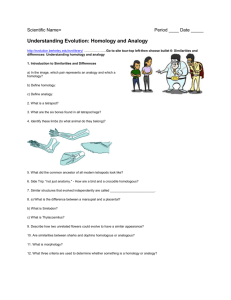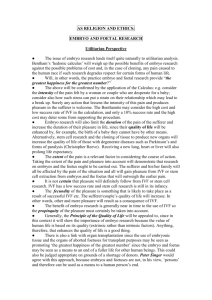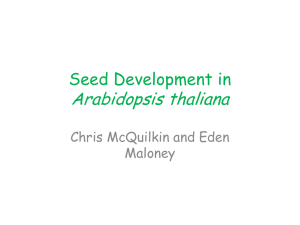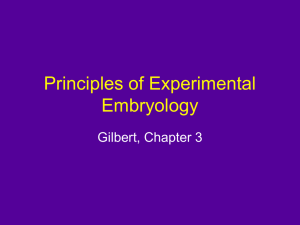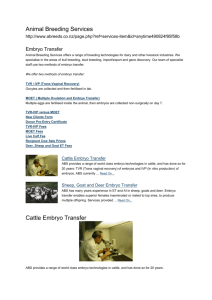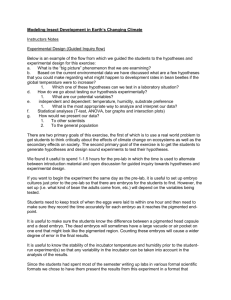Evidence of Evolution
advertisement
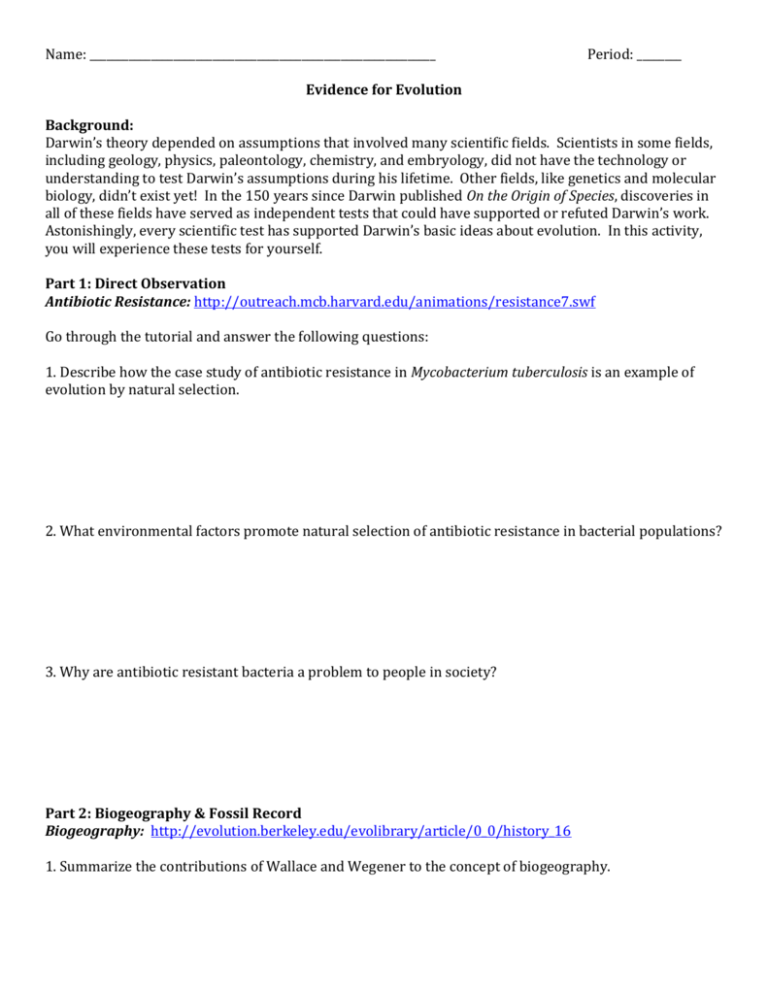
Name: ______________________________________________________________ Period: ________ Evidence for Evolution Background: Darwin’s theory depended on assumptions that involved many scientific fields. Scientists in some fields, including geology, physics, paleontology, chemistry, and embryology, did not have the technology or understanding to test Darwin’s assumptions during his lifetime. Other fields, like genetics and molecular biology, didn’t exist yet! In the 150 years since Darwin published On the Origin of Species, discoveries in all of these fields have served as independent tests that could have supported or refuted Darwin’s work. Astonishingly, every scientific test has supported Darwin’s basic ideas about evolution. In this activity, you will experience these tests for yourself. Part 1: Direct Observation Antibiotic Resistance: http://outreach.mcb.harvard.edu/animations/resistance7.swf Go through the tutorial and answer the following questions: 1. Describe how the case study of antibiotic resistance in Mycobacterium tuberculosis is an example of evolution by natural selection. 2. What environmental factors promote natural selection of antibiotic resistance in bacterial populations? 3. Why are antibiotic resistant bacteria a problem to people in society? Part 2: Biogeography & Fossil Record Biogeography: http://evolution.berkeley.edu/evolibrary/article/0_0/history_16 1. Summarize the contributions of Wallace and Wegener to the concept of biogeography. http://evolution.berkeley.edu/evolibrary/article/0_0_0/lines_11 1. The name biogeography is an appropriate name for this area of science. Explain in your own words what biogeography means. 2. According to Wallace and his colleagues, what would explain the evolution of similar but geographically separate species such as the emu, ostrich, and rhea? Fossil Record: http://evolution.berkeley.edu/evolibrary/article/lines_02 1. Identify the importance of fossils as evidence of evolution. Part 3: Comparative Anatomy (Homologous & Vestigial Structures, Embryological Development) Homology & Analogy: http://evolution.berkeley.edu/evolibrary/article/similarity_hs_01 1. Define homology: Define analogy: In the image, which pair represents an analogy and which a homology? 2. What is a tetrapod? 3. What are the six bones found in all tetrapod legs? 4. Identify these limbs, to what animal do they belong? 5. What did the common ancestor of all modern tetrapods look like? 6. Side Trip: "not just anatomy." - How are a bird and a crocodile homologous? 7. Similar structures that evolved independently are called __________________________. 8. What is the difference between a marsupial and a placental? 9. Describe how two unrelated flowers could evolve to have a similar appearance. 10. Are similarities between sharks and dolphins homologous or analogous? Explain. 11. What is morphology? 12. What three criteria are used to determine whether something is a homology or analogy? 13. Fill in the blanks of the primate tree. 14. Considering all of the evidence, are the "wings" (actually flaps of skin stretched between the legs) of sugar gliders and flying squirrels homologous or analogous structures? Explain why you would conclude this. 15. Sidetrip: See more examples of homology and examples of analogy. a) How are a Venus fly trap and a pitcher plant homologous? b) What plant gave rise to cauliflower and broccoli? c) The bones of the ears in mammals are homologous to what in lizards? Vestigial Structures: http://www.txtwriter.com/Backgrounders/Evolution/EVpage12.html 1. What is a vestigial structure? 2. What do vestigial structures tell us about evolution and ancestry? 3. Summarize 2 examples of human vestigial structures. Suggest a former function of each example. Embryological Development: http://www.pbs.org/wgbh/nova/evolution/guess-embryo.html Make a prediction: Do you think other organisms will have a similar embryologic development as humans? Explain your reasoning. For each of the embryos shown, try to guess which organism it will become. 1. Embryo 1 – a. What was your first prediction? ___________________ were you correct? __________ b. Watch the development of the embryo. On which day does the embryo begin to look different from other embryos? _______ 2. Embryo 2 a. What was your first prediction? ___________________ were you correct? __________ b. Watch the development of the embryo. On which day does the embryo begin to look different from other embryos? _______ 3. Embryo 3 a. What was your first prediction? ___________________ were you correct? __________ b. Watch the development of the embryo. On which day does the embryo begin to look different from other embryos? _______ 4. Embryo 4 a. What was your first prediction? ___________________ were you correct? __________ b. Watch the development of the embryo. On which day does the embryo begin to look different from other embryos? _______ 5. Was your prediction at the beginning of this activity correct? Explain your answer. Use at least one observation that you made during this activity to support your answer. http://www.biology-online.org/dictionary/Embryo 1. What is an embryo? (Use the human biology definition.) 2. Use the image above and list two similar features that are seen in the early stages of embryonic development. (a) ______________________ (b) _____________________ http://necsi.edu/projects/evolution/evidence/embryos/evidence_embryo.html 3. What did the gill slits in a fish embryo develop in to? 4. How do similarities in developing embryos provide evidence of evolution? Part 4: Genetics & Molecular Biology Video clip: http://www.pbs.org/wgbh/evolution/library/04/4/l_044_02.html 1. What happened when researcher Paul Nurse added human DNA to mutant yeast cells? 2. What does this indicate about the evolutionary relationship between humans and yeast? http://biochemistry.suite101.com/article.cfm/what_is_biochemistry 1. What is biochemistry? Watch the video: http://www.dnatube.com/video/28591/Molecular-evolution-genes-and-proteins 2. List two types of molecules that can be used to show an evolutionary relationship. What is their function? How are scientists using them to support the theory of evolution? 3. How was it determined that monkeys and cows are more closely related than monkeys and fish? 4. The table above shows the number of differences in the amino acid sequences of different organisms compared to humans. What is an amino acid? What molecule is built of amino acids? 5. According to the table, which organism is most closely related to the human? Which organism is the most distant relative of the human? How do you know?



